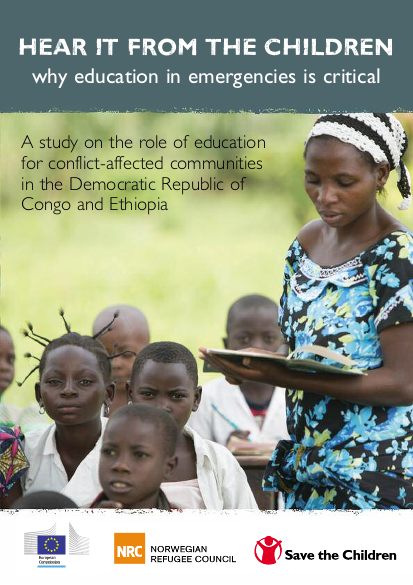A study on the role of education for conflict-affected communities in the Democratic Republic of Congo and Ethiopia

Millions of children are affected by conflict every year. Worldwide, children represent half of the 42.5 million people who are refugees or who have become internally displaced, in part as a result of conflict or violence in their countries. Nearly 50 million primary and lower secondary age children who live in conflict-affected countries are not in school. Living in conflict, many of these children have experienced more crisis, violence, and death in their young lives than most adults in peaceful countries will know in their lifetimes.
It is the responsibility of humanitarian actors and donors to listen to these children, their parents and their communities in order to understand their needs and respond with aid that is accountable and effective. With this principle in mind, Save the Children and the Norwegian Refugee Council undertook a study to capture the views of internally displaced persons and refugees on their priorities in and after an emergency. This study reflects the voices of more than 250 children, parents, teachers and community representatives in two locations currently served by education projects supported by the EU Children of Peace Initiative: Masisi, North Kivu, Democratic Republic of Congo, and Dollo Ado, Ethiopia.